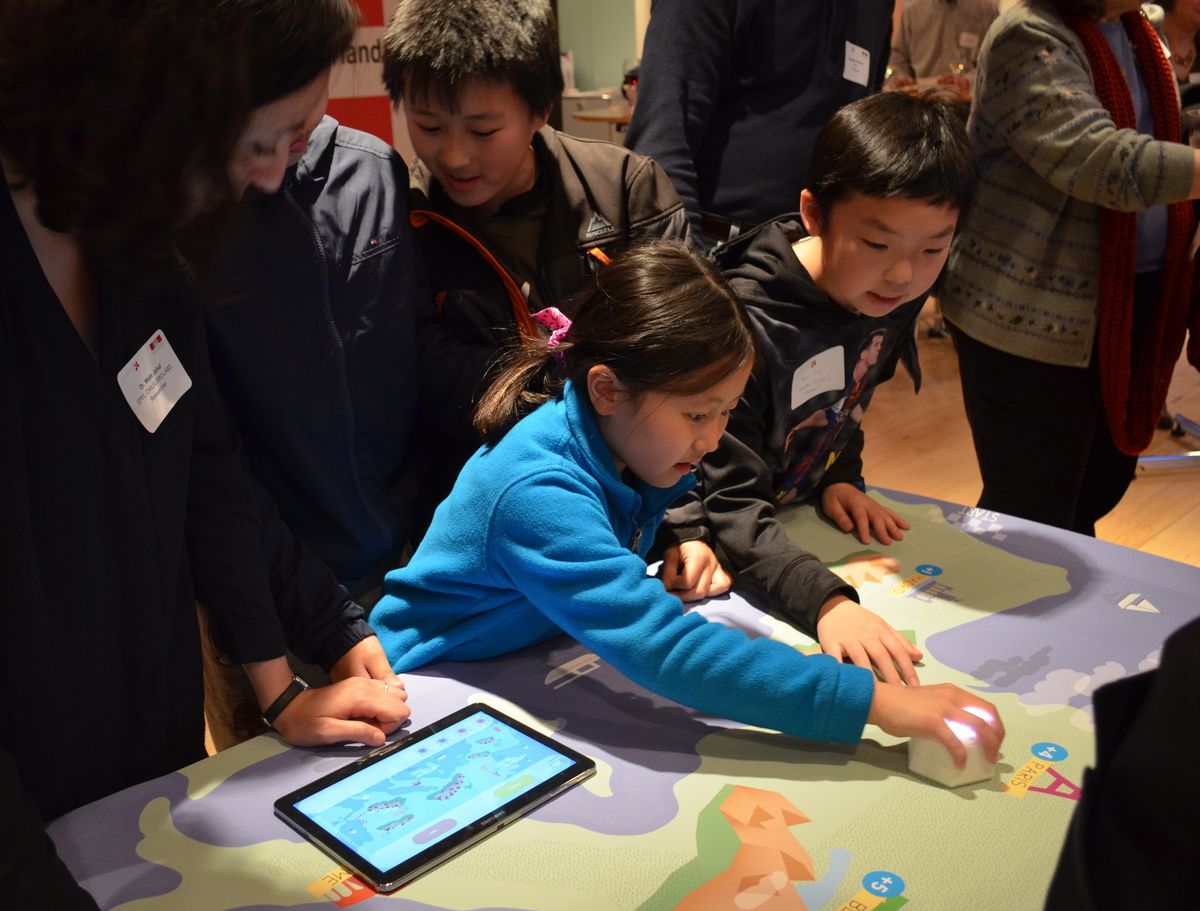Most of the educational robots that we hear about are designed to teach kids how to code. This is good and important and a thing we are in favor of, but robots are also useful in classroom settings even when they’re not teaching programming or computer science principles directly. EPFL’s Cellulo Project is exploring how small, inexpensive robots can leverage autonomy and interactivity to help kids learn with their hands.
Cellulo robots are designed from the start to be “kid-proof.” You can grab them and shove them around without worrying about breaking anything, and they’re resilient to the sort of rough handling that children are well known for. The top of each robot features six illuminated buttons, while on the bottom are three permanent-magnet assisted omnidirectional ball drives that enable holonomic motion. Overall, the intent is to make Cellulo reasonably cheap: It’s almost entirely off-the-shelf parts, and the research versions cost US $135 each.

To localize, the robots use a downward-pointing camera mounted underneath: They can tell where they are by looking at “a dense, deterministic and well defined optical microdot pattern printable on regular office printers, with enough x, y space to cover over 170 million km2 with unique patterns.” This means that you could cover the entire land area of the Earth with unique microdot patterns and still have plenty to spare, which (if we could pull it off) would make deploying autonomous robots a heck of a lot easier.
Using a system like this (which is similar to what you find in Anki Drive) means that each robot can localize by itself, and can handle being “kidnapped” (picked up and placed somewhere else). Another advantage of the system is that it works even if the room is not well-lit, because the robot is sitting on top of the pattern. This method is quite accurate, offering absolute localization with ∼0.27 millimeters and ∼1.5 degrees of heading without the need for any calibration. The downside, of course, is that the robots only work on the patterned paper, but since you can print it out yourself, that’s not too much of a barrier.
Cellulo robots are intended to be used in groups, where they can provide tangible examples of how things like atoms or planets move. They all talk to a tablet via Bluetooth, which keeps their motions coordinated, even if individual robots are being shoved around.
EPFL is experimenting with a variety of different lessons that Cellulo robots can teach, like a collaborative treasure hunt, or understanding how weather works. In the latter, the robots can be placed on a map and act like balloons, moving from areas of high pressure to areas of low pressure in a way that can be both seen and felt. Then, children are asked to position robots that act as high pressure points to “steer” another robot along a specific course. You could do all of this stuff with just an app on a tablet and without using physical robots, of course, but the EPFL researchers are betting (and conducting studies to confirm) that having the robots is a much more effective teaching tool.
[ Cellulo Project ]
Evan Ackerman is a senior editor at IEEE Spectrum. Since 2007, he has written over 6,000 articles on robotics and technology. He has a degree in Martian geology and is excellent at playing bagpipes.



